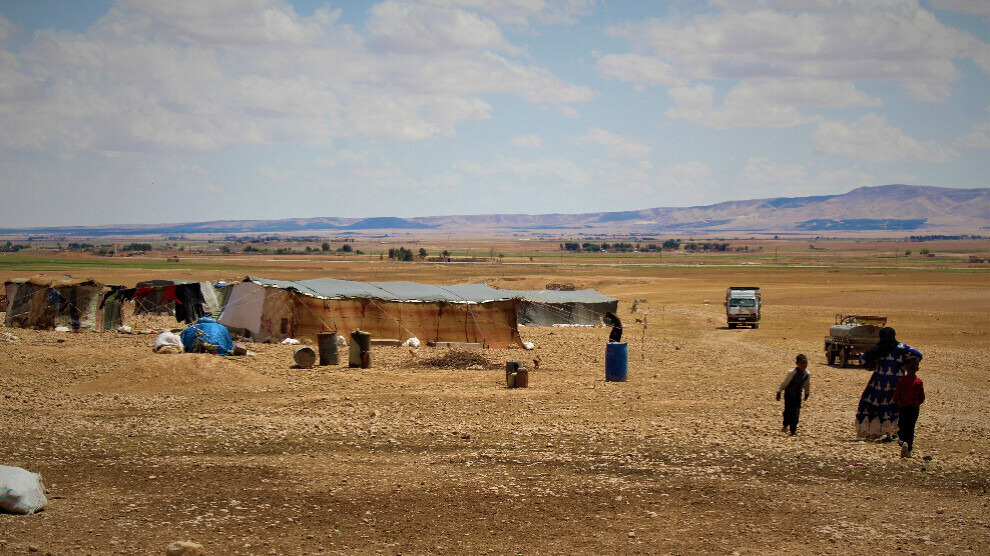Migration story from Deir ez-Zor to Tall Tamr: It's safer here
Zabila Esed and Şemsa Salih, who migrated from Deir ez-Zor to Tall Tamr, say their village is not safe, even if they have to stay in tents, Tall Tamr is safer for them.

SORGUL ŞÊXO
Hasakah- When the conflicts in Syria started, local and international hegemonic powers began to attack the region. These attacks cause the crisis to deepen, more bloodshed and internal migration. In Deir ez-Zor, there are many armed forces, including the forces of the Syrian regime, ISIS, and the Iranian army while some parts of the region are under the control of the Syrian Democratic Forces (SDF). Undoubtedly, the people living in the areas under the control of the Syrian regime and other armed groups are forced to migrate to safe areas and cities. Zabila Esed and Şemse Salih, who were forcibly displaced from rural areas in the south of Deir ez-Zor to the Tall Tamr town located in northeastern Syria along with several families in 2016, have been living in tents in the town of Tall Tamr. We can say that these families have a communal life in the town. They make tandoori bread and boil water over the fire of the tandoor.
They had to leave their village due to clashes
45-year-old Zabila Esed is the mother of seven. “We were born and grew up in the desert of Deir ez-Zor. But when the war started, everything changed for us. Many houses were destroyed in the clashes that broke out between ISIS and the Syrian regime. Even the doors and windows of our house were stolen. We had to leave our village to protect our children. It wasn't safe there anymore. Our village is now under the control of the Syrian Regime. We took our animals with us and left our village in 2016. We first went to Ebû Xeşeb and then to Hasakah and finally settled in Tall Tamr,” she told us.
They are in a safer place
After settling in the town, they worked as agricultural laborers to make a living. “After settling here, we grazed our animals for two months. Then, we had to work as agricultural laborers for a living. We work in Amûdê, Dirbêsiyê and Qamishlo. When we go to these cities, we take our animals with us. I can say that we have a nomadic life. During the harvest season, we work in wheat and cotton fields. Despite the limited job opportunities, it's safe for us here. We make yogurt and ayran by using the milk from our dairy animals,” Zabila Esed said.
Tents are safer than their village
Stating that they prefer to live in tents rather than return to their unsafe village, Zabila Esed said, “What will we do if we return to the village? Our houses were destroyed and it is unsafe. Now, we have a safe life in tents. Those who return to the village are killed or die due to landmines. We want to return to our village but when it will be safe.”
50-year-old Şemsa Salih has nine children, four daughters, and five sons. Speaking about the difficulties they face, she said, “In winter, the ground is always wet and inside our tents are always wet due to rainfall. In summer, we suffer from sandstorms. There is no place to take shelter except tents. It’s safer for us here so we will not return.”
